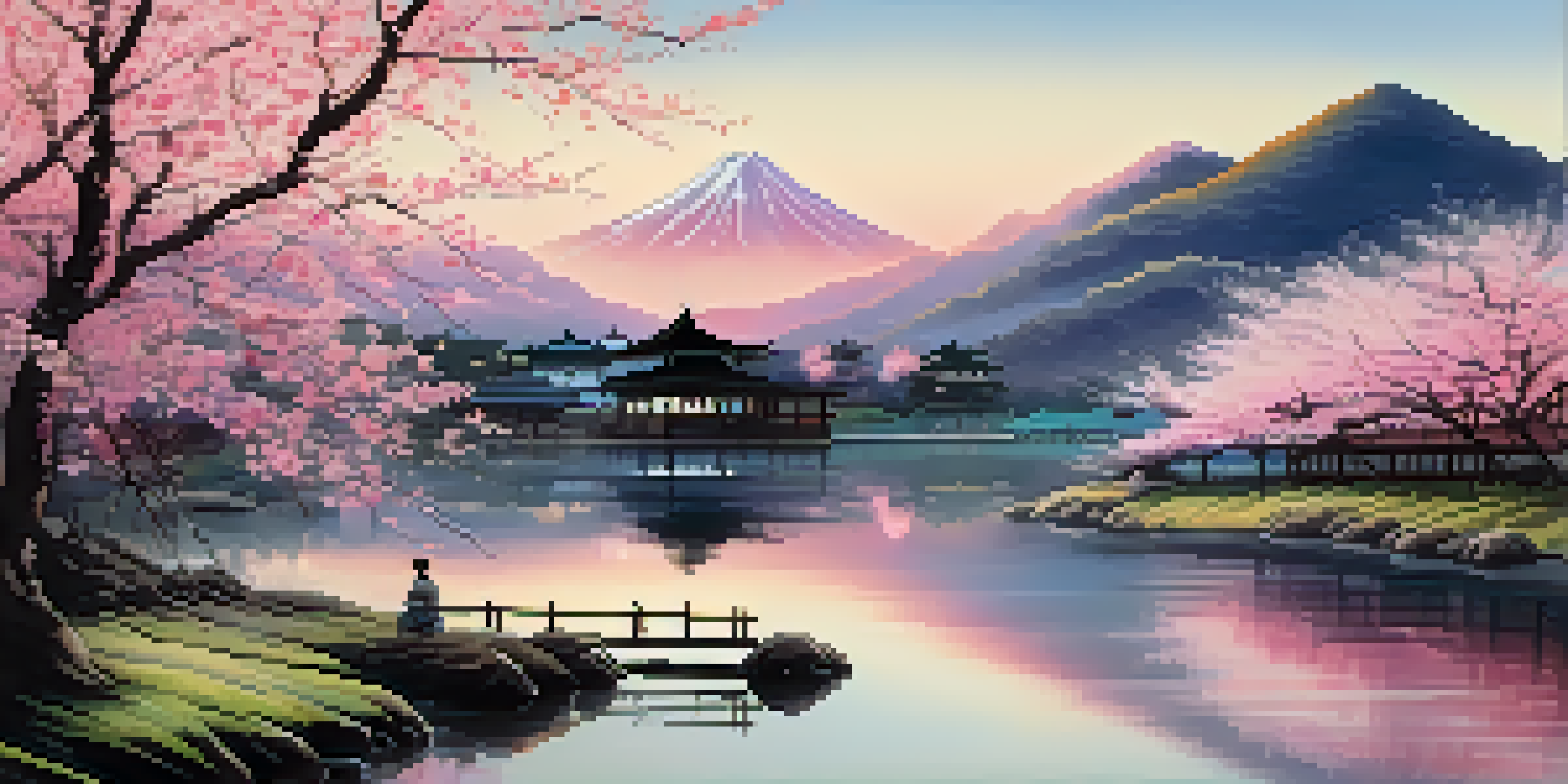The Role of Cultural Heritage in Traditional Painting Techniques

Understanding Cultural Heritage in the Arts
Cultural heritage encompasses the traditions, practices, and values passed down through generations. It reflects the identity of a community and shapes its artistic expressions. In painting, this heritage informs not only the styles and techniques used but also the themes and subjects depicted in artworks.
Traditional Painting Techniques Across Cultures
Various cultures have developed unique painting techniques that highlight their distinct heritage. For example, Japanese ink painting, known as sumi-e, uses simple brush strokes to convey deep meanings. Similarly, Mexican muralism combines vibrant colors and social themes, showcasing the rich history and struggles of the community.
Cultural Heritage Shapes Art
Cultural heritage influences artistic expressions by reflecting community identity through traditions, practices, and values.
Materials and Methods Rooted in Tradition
The materials used in traditional painting often have historical significance. In ancient Egypt, artists utilized natural pigments derived from minerals and plants, which were not only sustainable but also deeply connected to their environment. These choices reflect the values and resources of the culture, enhancing the significance of each piece.
The Influence of Religion and Spirituality
Religion plays a crucial role in shaping traditional painting techniques. In many cultures, artworks serve as a medium for spiritual expression or storytelling. For instance, Indian Madhubani paintings often depict deities and mythological scenes, intertwining art with cultural beliefs and practices.
Traditional Techniques Evolve
Traditional painting techniques are preserved through apprenticeships, fostering community bonds while adapting to contemporary themes.
Preservation of Techniques Through Generations
Traditional painting techniques are often passed down through apprenticeships, ensuring that skills and knowledge are retained. This transfer of knowledge creates a strong sense of community and belonging within the culture. As a result, these techniques evolve while still honoring their origins, maintaining a living connection to the past.
Modern Adaptations of Traditional Techniques
While rooted in history, traditional painting techniques are not static. Many contemporary artists blend these age-old methods with modern themes and materials, creating a dialogue between the past and present. This fusion allows cultural heritage to remain relevant while also attracting new audiences.
Preserving Cultural Diversity
Recognizing and appreciating cultural heritage is vital for supporting artists and communities in maintaining their unique identities.
Cultural Heritage as a Source of Inspiration
For many artists, cultural heritage serves as a wellspring of inspiration. By drawing from their backgrounds, they create works that resonate with personal and collective experiences. This not only enriches their art but also fosters a greater appreciation for the diversity of human expression.
The Importance of Recognizing Cultural Heritage
Understanding and appreciating cultural heritage is essential in today’s globalized world. By recognizing the value of traditional painting techniques, we can support artists and communities in preserving their unique identities. This commitment not only enriches our collective human experience but also encourages respect for cultural diversity.